|
|
|
list conceit
Wednesday, November 26 2008
setting: rural Hurley Township, Ulster County, New York
After several hours of frantic activity, our car was packed and Gretchen and I headed southward on the New York Thruway. With us were Sally and Eleanor the dogs and Marie (aka "the Baby"), our most portable feline. This being the biggest travel day of the year, we avoided the New Jersey Turnpike, taking I-287 to US 206 to I-295. I-295 runs parallel (and fairly close to) the NJ Turnpike for much of its distance, though it's much less crowded. It dumps you out at the Delaware Memorial Bridge just like the Turnpike does. In the past when we've gone through Princeton, we've crossed the Delaware at Philadelphia, a move that added unnecessary miles to our trip. At the time it had seemed prudent as a way of minimizing time spent in New Jersey, one of the least pleasant places to drive this side of Baghdad.
[The one big advantage of driving in New Jersey is that gas is cheap, but the cheap gas we bought at the Lora's in Hillsborough eventually proved sub-par, giving us less than thirty miles per gallon. Usually we get 34 to 36.]
For much of our time in New Jersey, we listened to K-Rock, the loud, noisy, and somewhat dated New York rock radio station. They were having one of their "list weekends" wherein they count down the entries on a list such as "top guitar songs of all time" and "best vocalists" and even "best second track on a CD." K-Rock's format includes everything from early Metallica to classic Rolling Stones, but does not include anything by the Beatles, Slayer, or music produced after 1995. The list conceit proved an addictive one, and we ended up listening to a lot more commercials than we normally would have, if only just to know who the second biggest singer of all time would be (Eddie Vedder; obviously Bob Plant was number one).
Somehow we avoided congestion for nearly all of our trip, encountering only a couple miles of it on the Capital Beltway northeast of Washington.
Once we got to Gretchen's house and had walked the dogs in Sligo Creek Park, Gretchen spent most of her time either cooking or making plans for tomorrow's big feast. I kept out of the way. Eventually Gretchen's brother and family arrived after their long drive from Pittsburgh and we all sat down and had a simple though perfectly delicious and largely vegan Ethiopian meal. Later there were a few exchanges of gifts, though the recession seemed to have drained the informal ceremony of its usual extravagance. Nobody gave anybody googly-eyed owls made from pine cones, but this recession is only just beginning.
Later I helped Gretchen's brother debug a non-functioning Heathkit electronic doorbell he'd built from a kit twenty years ago. He'd taken it off the wall, and it didn't take long to determine that there was nothing wrong with the electronics; the mechanical switch at the door had simply worn out. We then turned our attention to another problem. Though the circuit had been built correctly, it hadn't been wired correctly, and Gretchen's brother wanted to know if perhaps this was the reason one had to hold the button down to hear the entire pre-programmed melody play. Perhaps there was some sort of one-shot circuit on the board he had bypassed. I'd determined that he'd wired the board so that it was simply powered up by the pushing of the button at the door, though supposedly there was a provision for it to always be on and accept a signal from the button. There seemed to be an electrical short on the board that forced the melody to play whenever the board was powered up, and after I'd tracked this down and found it to be a deliberate jumpering), I turned my attention to how the board worked to see what it was actually capable of. Having been designed in 1975, this doorbell was brutally simple: a 7493 four bit binary counter connected to a 74154 four-to-sixteen line decoder. When energized, the doorbell circuit fired each of the sixteen lines of the 74154 in order, sending pulses through resistors that determined a tone, resulting in a robotic melody containing sixteen notes of equal length. There was no one shot circuitry and no way to ensure the entire tone would play. Gretchen's brother wanted to know what other options might be available for modernizing the doorbell, and I suggested using an Arduino. This would allow for complicated melodies that could be changed via a USB-linked computer. Hell, an Arduino could even keep a log of its recent activity.
Speaking of logs, I sure hope the fancy computerized toilet up in Gretchen's parents' master bedroom doesn't keep a log of what it's been asked to do. It's got some bidet settings that would result in Congressional hearings were they more widely known.
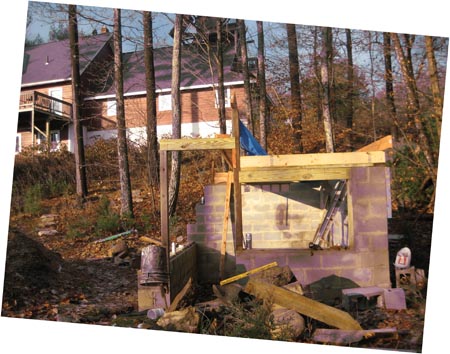
The greenhouse this morning, viewed from the east, with the house behind it.
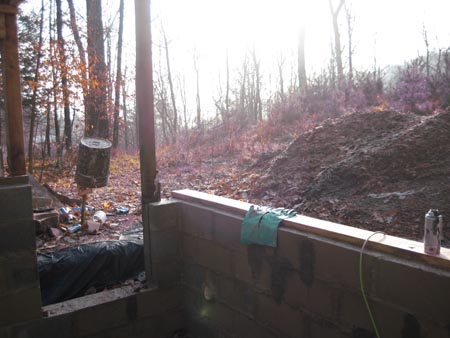
From inside the greenhouse this morning, looking southeastward.
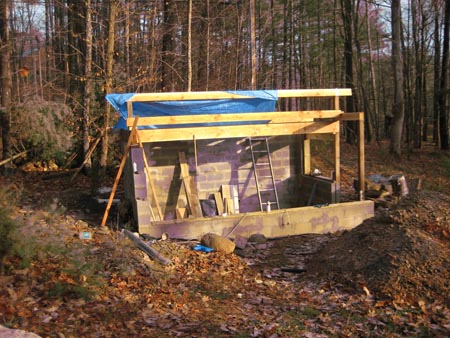
The greenhouse this morning, viewed from the south.

The new floor joists, viewed from the east side of the greenhouse.
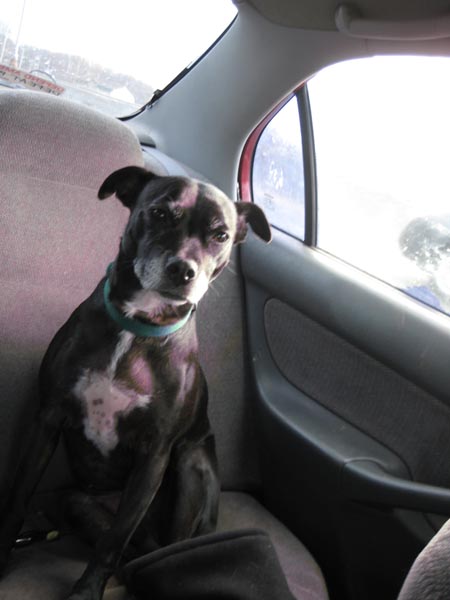
Eleanor on the road trip.
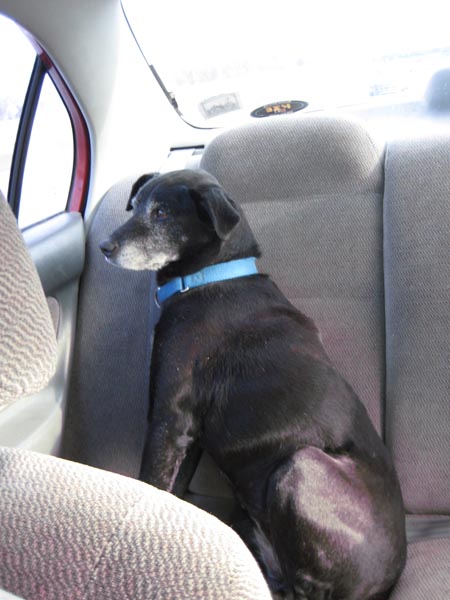
Sally on the road trip. This is one of her favorite things to do.
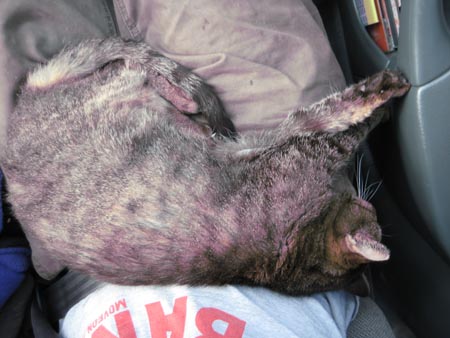
The baby on the road trip. She's happy to sleep in a lap, even at highway speed.

The Delaware Memorial Bridge today.
For linking purposes this article's URL is:
http://asecular.com/blog.php?081126 feedback
previous | next |







